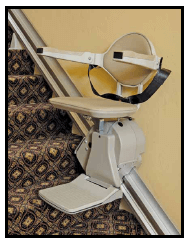 Hip replacements are very common; the CDC says 327,000 of them are performed in the US each year. But that doesn’t mean every hip replacement patient will bounce back quickly and painlessly from the surgery. It’s a major procedure, as the hip is one of the body’s largest joints (per the American Academy of Orthopedic Surgeons). That means the road to recovery may be a long one, and the healing process can take time.
Hip replacements are very common; the CDC says 327,000 of them are performed in the US each year. But that doesn’t mean every hip replacement patient will bounce back quickly and painlessly from the surgery. It’s a major procedure, as the hip is one of the body’s largest joints (per the American Academy of Orthopedic Surgeons). That means the road to recovery may be a long one, and the healing process can take time.
Armed with the knowledge of what is to come and what options may ease the transition following surgery, you’ll soon be walking, dancing, and moving about freely. Consider these post-surgery resources:
How long is the healing time?
According to the National Institute of Arthritis and Musculoskeletal and Skin Diseases (NIAMS), the hospital stay is about 3 to 5 days, but full recovery takes about 3 to 6 months. The time frame ultimately depends on what type of hip surgery you have, your state of health, and how successfully you move through rehabilitation (physical/occupational therapy), says this article from the NIAMS website. The experts at AAOS recommend the use of a foam pillow between your legs — as a “positioning splint” — during the early days of recovery.
What mobility equipment may be helpful?
Mobility aids such as a walker, cane, wheelchair, or power scooter may be helpful during the recovery period. While it’s important to keep moving during this time in order to build up the strength in your lower body and adjust to the new hip, there may be times when rest is necessary — and a power scooter or wheelchair could serve that purpose. If balance or support is an issue, a cane or walker may be the best option.
You know those reacher/grabber tools? If you drop or can’t reach an item, these low-cost gadgets (typically $20 or less) are invaluable as you regain strength and balance.
Depending on the layout of your home and whether or not you’ll have help from a caregiver, the use of a stairlift or wheelchair ramp may be necessary. Check out the options available for rent or purchase at 101 Mobility®’s site.
How can I prepare my home?
A great checklist of home modifications for the post-surgery months is available on the AAOS website. We’ll share a few of them here:
- Safety bars or handrails in your shower/bath
- A stable chair with a firm seat cushion, back, and two arms
- A raised toilet seat and stable shower bench or chair for bathing
- A dressing stick, a sock aid, and a long-handled shoehorn for putting on and taking off shoes and socks without excessively bending your new hip
Be sure to remove loose carpets and electrical cords from high traffic areas in the home. A fall can be devastating during these vulnerable weeks and months following surgery. Another great suggestion: set up a “recovery center” in the room/area where you will spend most of your time, keeping the TV remote, books, magazines, medications, and a phone within easy reach.
This bonus tip comes from a recent hip surgery patient: put “slippery” sheets on the bed for an easier transition in and out.
More information:
- NIAMS: Questions & Answers about Hip Replacement
- WebMD: Arthritis and Hip Replacement Surgery
- Mayo Clinic: Hip Replacement
- Mesothelioma Group: Patient Help Information

